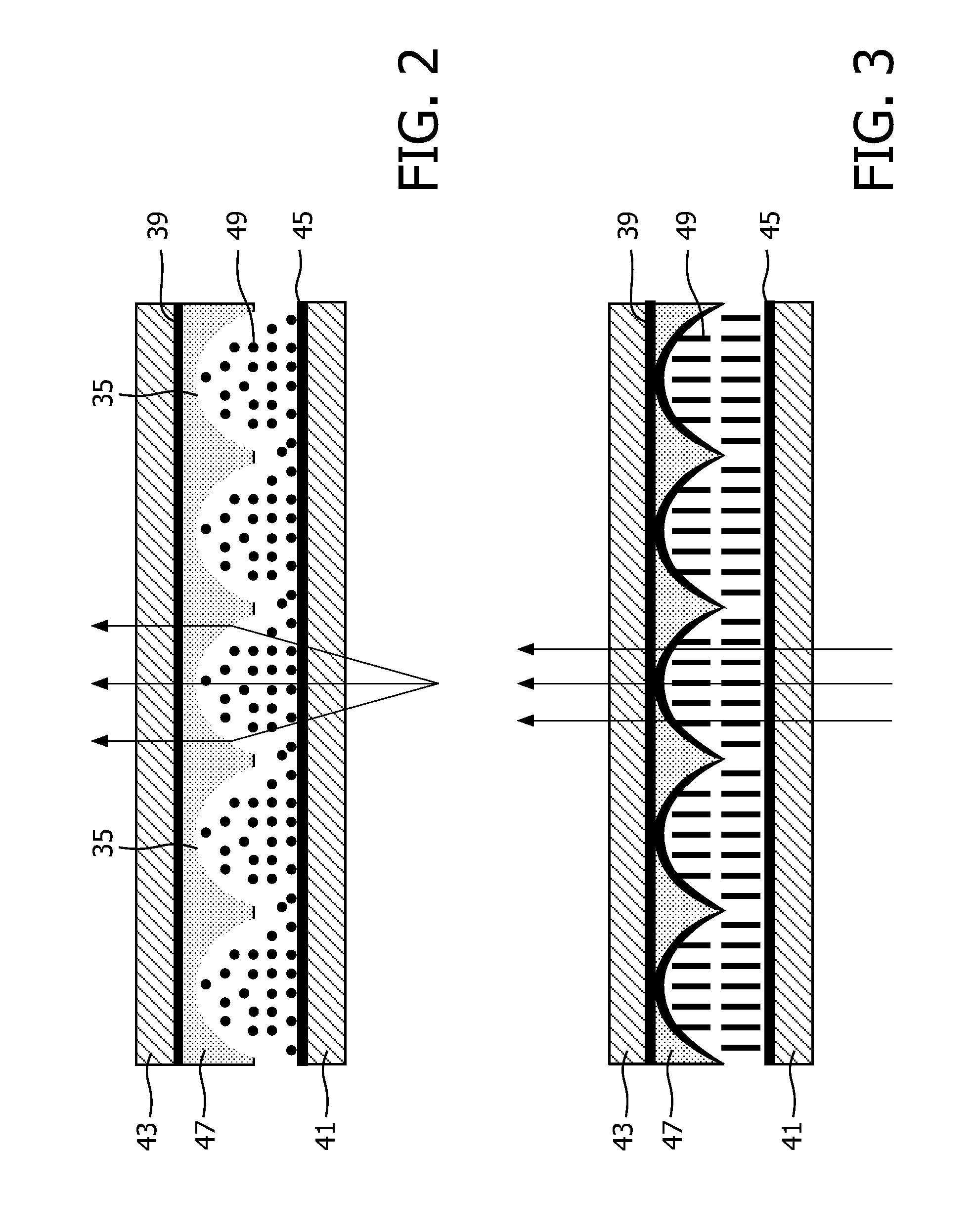Multi-view autostereoscopic display device
a display device and multi-view technology, applied in the field of autostereoscopic display devices, can solve the problems of inability to meet the needs of users at a fixed position, inability to achieve light efficiency, and inability to sacrifice resolution for certain applications, so as to improve image uniformity, reduce banding, and increase the resolution at the output.
- Summary
- Abstract
- Description
- Claims
- Application Information
AI Technical Summary
Benefits of technology
Problems solved by technology
Method used
Image
Examples
Embodiment Construction
[0045]The invention provides a switchable autostereoscopic display device in which an imaging arrangement directs the output from different pixels to different spatial positions to enable a stereoscopic image to be viewed. The display is controllable between two 3D modes based on the polarization of the light provided to the imaging arrangement, in order to enable the resolution or number of images to be increased using a time multiplex approach, or to enable additional output functions to be provided.
[0046]FIG. 1 is a schematic perspective view of a known direct view autostereoscopic display device 1. The known device 1 comprises a liquid crystal display panel 3 of the active matrix type that acts as a spatial light modulator to produce the display.
[0047]The display panel 3 has an orthogonal array of display pixels 5 arranged in rows and columns. For the sake of clarity, only a small number of display pixels 5 are shown in the Figure. In practice, the display panel 3 might comprise...
PUM
 Login to View More
Login to View More Abstract
Description
Claims
Application Information
 Login to View More
Login to View More - R&D
- Intellectual Property
- Life Sciences
- Materials
- Tech Scout
- Unparalleled Data Quality
- Higher Quality Content
- 60% Fewer Hallucinations
Browse by: Latest US Patents, China's latest patents, Technical Efficacy Thesaurus, Application Domain, Technology Topic, Popular Technical Reports.
© 2025 PatSnap. All rights reserved.Legal|Privacy policy|Modern Slavery Act Transparency Statement|Sitemap|About US| Contact US: help@patsnap.com



